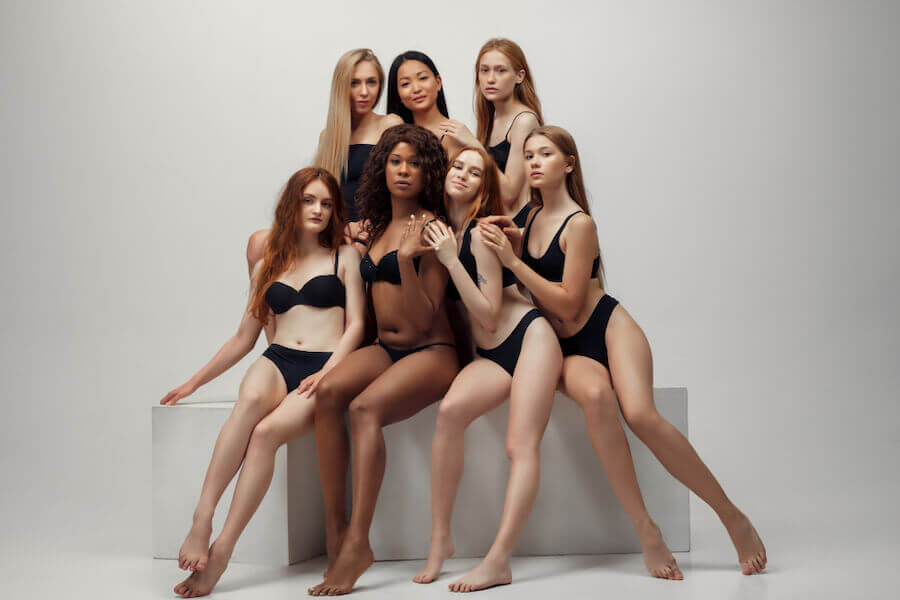A person’s race or ethnicity can be characterized by a single or range of skin tones amongst other things. The olive skin tone is no exception to this as it is an obvious feature people from certain ethnicities have.
An olive complexion has a certain radiance and earthiness to it. It refers to a moderate or light brown shade of skin color with green, yellow, or golden undertones. This complexion is commonly observed among people of Asian, Mediterranean, and Latin American descent.
Some people may attempt to achieve this skin tone by getting a tan from sunbathing. However, a golden brown tan gotten from a few hours in the sun can’t be compared to a natural olive skin complexion. It is a characteristic that sticks with its owners from birth, and people from different ethnicities may be born with olive skin tone.
The olive complexion doesn’t just refer to a light brown shade, but there’s some greenish glow to it like the actual olive fruit itself. Although the green isn’t conspicuous and may come off as light brown, it is what differentiates an olive tone from other complexions.
Let’s now look at which ethnicities have an olive skin tone, and go over the pros and cons of having olive-skin tones.
Olive Skin Tones and the Ethnicities that Have It
The Fitzpatrick Scale classifies skin tones from the fairest to darkest complexions starting from Type I – Type VI. Olive can be defined as neutral so it falls in the middle of the scale from Type III – V.
Let’s examine each of these classes below and where you’ll find them in the world:
Type III
The type III skin tone ranges from a light cream tone to a darker olive shade. It’s the most common skin tone in the world and is found amongst Caucasians, Latin Americans, and Asians.
This skin type always tans, but burns slightly sometimes after prolonged exposure to the sun. It has a low amount of melanin which is why it’s prone to sunburn and tanning.
Type IV
People with a type IV skin tone have yellow undertones and usually don’t burn, but they may tan. This group can be found in Africa, the Middle East, India, and Southeast Asia.
This type of skin tone is within the brownish olive skin to a moderately brown tone. People with this skin type rarely suffer sunburn, but may easily get a tan. You’ll find this shade of skin in Latin America, the Mediterranean, and Asia as well.
Type V
The type V skin tone has a moderate brown complexion and is the most common olive skin tone. Individuals with this complexion have a high tolerance to the sun and don’t usually burn, but they may get a tan.
The type V tone falls between the olive and tan shade. It’s very rare to experience a sunburn, but it may tan easily. People in the Mediterranean, Middle East, Latin America, India, and some regions in Africa have the Type V complexion.
Ethnicities with Olive Complexion
Most people know that people with white skin are of European descent and those with black are of African descent, but with olive skin, the answer isn’t a single ethnic group or race.

Olive skin tone can be found in different parts of the continents all over the world. Here are a few examples of the ethnicities that have an olive skin tone:
Mediterranean
The Mediterranean race is a sub-Caucasian race found on Mediterranean basin lands across Asia, Africa, and Europe.
People of Mediterranean descent could hail from South European countries which include Portugal, Spain, Greece, South France, and the European part of Turkey. Parts of Middle East Asia, South Central, and North Africa make up the Mediterranean region as well.
In addition to having a cream, tan, olive, or brown complexion, there are certain characteristics common to Mediterranean people. This includes their average to short height, dark hair and eyes, and aquiline-like nose.
Malay
Those of Malay Descent are called Austronesians, it doesn’t refer to just the Malaysian ethnicity.
People from Indonesia, the Philippines, and Southeast Asia are included in this category as well. Austronesians are the people who first populated the Pacific islands.
This race is unique because of its various physical features which can be olive, light brown, or dark brown skin tones. They may also have wavy to curly hair, and many Malay people have an epicanthic fold which is a skin fold that covers the inner corner of their eyes.
Their complexion is usually brownish with a range from olive to dark chestnut-like brown. They also have thick, curly dark hair, full noses, distinct mouths, and a prominent forehead.
Middle Eastern
Middle Eastern people have a variety of skin tones from the fairest to the darkest. However, the brown skin tone tends to be more predominant with an olive tine for those on the fairer side of the spectrum.
You’ll find olive complexion among the people of Algeria, Lebanon, Iran, Turkey, Egypt, and Afghanistan.
Arabian countries, including Kuwait, Qatar, Oman, Yemen, the United Arab Emirates, and Saudi Arabia tend to have a darker skin tone, but you may also find the olive complexion here.
Indian
The Indian ethnicity is one of the most diverse in the world. India is a country that has over 1,500 spoken languages and over 2,000 ethnic groups.
That being said, the skin tone of Indians can be generally classified into three categories which are: light, medium, and dark.
Light skin tones are usually yellowish, medium skin tones are a mix of yellow and pink, and dark skin tones are either brown or black. Olive skin falls within the medium range.
The Indian race or subcontinent is made up of people from India, Bhutan, Bangladesh, Pakistan, Nepal, Sri Lanka, and the Maldives.
You can find Indians with olive skin in almost every region of the country, but it’s more predominant in the south. Some of the states where you’ll find a high percentage of people with olive skin are Andhra Pradesh, Karnataka, Tamil Nadu, and Kerala.
Native & Latin Americas
Native Americans are also known as American Indians describe those indigenously from the United States. Amerindians in Latin America consist of people from Peru, Bolivia, and Guatemala.
Indigenous Americans have a skin tone that ranges from brown to olive. The Inca, who was the largest and most powerful indigenous American empire, had a light brown skin tone. They were said to have hair that was black, straight, and thick. Their eyes were also dark.
Asian
The skin tone of East Asians can be classified into two categories which are yellow and white. Within the yellow category, there are three subcategories which are light, medium, and dark.
Those with a light yellow skin tone are usually found in Southeast Asia, while those with a dark yellow skin tone are found in China and Japan.
Within the white category, you have those with a fair skin tone who are usually from Northern Asia and those with a dark skin tone who are from Southern Asia.
Olive skin is usually found in the medium subcategory and is most commonly seen in East Asia. This is because East Asians come from a mix of different races
You can find East Asians with olive skin in countries such as Japan, South Korea, and Taiwan.
Pros and Cons of Being Olive Skinned
We can’t deny the radiant shine olive-skinned beauties carry around alongside other perks. However, there are also a few uncomfortable things they may have to deal with at some point. Here are the pros and cons below:
Pros
- Skin isn’t very sensitive to the sun; people with an olive skin tone aren’t as sensitive to the sun as those on the fairer end of the spectrum. This is because they have more melanin which gives their skin its color and also acts as protection against the sun by absorbing UV rays.
- Tans easily; in addition to being less sensitive to sunlight, the olive skin also gets tanned easily.
- This is a great thing because it means that you don’t have to worry about getting too much sun and ending up with skin wrinkles.
Cons
- Pores get clogged easily; olive skin tends to produce much oily and this may cause the pores to get clogged leading to acne and pimples.
- May suffer discoloration; while olive skin isn’t very sensitive to the sun, persistent prolonged exposure may cause some damage after a while. This causes an increased production of melanin leading to discoloration. So, sunscreen is important for olive-skinned people too.
Style and makeup are difficult; certain colors may not look as good on olive skin as they do on fairer skin. For instance, cool shades like blue or green may make olive skin look tired or muddy. The challenge for olive-skinned people is to find the right colors that will flatter their complexion.
Final Thoughts
It isn’t easy to tell where an olive-skinned person is from just by their complexion because such skin tone can be found in various countries across the continent. Hopefully, with this article, you now know the regions where this skin tone is predominant.

